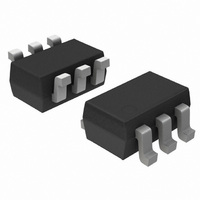NUF2221W1T2G ON Semiconductor, NUF2221W1T2G Datasheet - Page 3

NUF2221W1T2G
Manufacturer Part Number
NUF2221W1T2G
Description
IC FILTER USB ESD PROTECT SOT363
Manufacturer
ON Semiconductor
Datasheet
1.NUF2221W1T2G.pdf
(5 pages)
Specifications of NUF2221W1T2G
Resistance (ohms)
22
Capacitance
42pF
Power (watts)
0.2W, 1/5W
Package / Case
SC-70-6, SC-88, SOT-363
Resistance In Ohms
22.0
Product
EMI Filters
Maximum Dc Current
100 nAmps
Maximum Dc Resistance
26.4 Ohms
Operating Temperature Range
- 55 C to + 125 C
Shielding
Unshielded
Test Frequency
1 MHz
Diode Type
ESD Protection
Power Dissipation Pd
225mW
Operating Voltage
5.25V
Diode Case Style
SOT-363
No. Of Pins
6
Current Rating
100nA
Filter Type
EMI
Rohs Compliant
Yes
Lead Free Status / RoHS Status
Lead free / RoHS Compliant
Tolerance
-
Lead Free Status / Rohs Status
Lead free / RoHS Compliant
Other names
NUF2221W1T2GOSTR
Available stocks
Company
Part Number
Manufacturer
Quantity
Price
Company:
Part Number:
NUF2221W1T2G
Manufacturer:
ON
Quantity:
3 000
Part Number:
NUF2221W1T2G
Manufacturer:
ON/安森美
Quantity:
20 000
What is USB?
enables a single port on the computer to be a link for a myriad
of devices, (up to 127 devices in a USB system). We can
easily chain one device to another and use one port as a
connecting point of many devices by using a hub. All these
enable us to look at the USB system as a small network of
devices.
devices to your computer faster, easier and virtually
limitless. High−Speed USB devices are capable of
communicating at speeds up to 12 megabytes−without
shutting down and without having to open your computer.
Typical USB System
devices.
The Host
complexity of the protocol (simplifies the designing of USB
devices). The host controls the media access, therefore, no
one can access the bus unless it got an approval required
from the host.
The Hub
many devices to connect to a single USB port. The logical
topology of the USB is a star structure, all the devices are
connected (logically) directly to the host. It is totally
transparent to the device what is its’ hub tier (the number of
hubs the data has to flow through). The hub is connected to
the USB host in the upstream direction (data flows ”up” to
the host) and is connected to the USB device in the
downstream direction (data flows ”down” from the host to
the device). The hubs’ main functionality is the
responsibility of detecting an attachment and detachment of
Scanner
The USB is not a serial port, it is a serial bus, a fact that
The Universal Serial Bus (USB) makes connecting
Typically the USB system consists of one host, hubs and
The host in the USB system, is responsible to the whole
The hub provides an interconnect point, which enables
Printer
Figure 4. Typical USB System
HUB
Computer PC
KeyBoard
Monitor
CPU
APPLICATIONS BACKGROUND
Plotter
Mouse
Telephone
http://onsemi.com
3
devices, handling the power management for devices that
are bus−powered (get power from the bus), and
responsibility for bus error detection and recovery. Another
important role of the hub is to manage both full and low
speed devices. When a device is attached to the system the
hub detects the speed, which the device operates in, and
through the whole communication on the bus prevents from
full speed traffic to reach low seed device and vice versa
– prevent from low speed traffic to reach full speed device.
The Device
which is not a host (including hubs). A device provides one
or more USB functions. Most of the devices provide only
one function but there may be some, which provides more
than one and called compound devices. We refer to two
kinds of devices − self powered or bus powered devices. A
device that gets its power from the bus is called bus powered
and on the other hand a device which supplies its own power
is called self powered. There are two kinds of devices for
USB 1.1:
NUF2221W1 Device Information
requires the USB drivers to have certain impedance
characteristics. The series resistance plus the USB driver
output resistance must be close to the USB cable’s
impedance of 45 W unbalanced (90 W balance) to minimize
transmission line reflections. In addition USB 1.1 also
requires upstream ports to be terminated with a pull−up
resistor (usually 1.5 kW) from D+ or D− lines to V
(V
regulator). In case of EMI, the radiated and conducted EMI
should be kept within the required levels as specified by the
FCC regulations. Actual FCC regulations requires that class
B computing devices meet the specifications of maximum
levels for both radiated and conducted EMI (Radiated EMI
covers the frequency range from 30 MHz to 1 GHz and
Conducted EMI covers the 450 kHz to 30MHz range).
provides series termination, EMI filtering and ESD
protection for the two data lines (D+, D−) as well as for the
VBUS. The
IEC61000−4−2 (Level 4), HBM class 3B and MM class C.
All these features are offered in an integrated solution placed
The Device is defined as everything in the USB system,
Full−speed devices − operates in 12 Mb/s
Low−speed devices that work in 1.5 Mb/s.
The Universal Serial Bus (USB) specification revision 1.1
The NUF2221W1 device from On Semiconductor
CC
is usually taken from V
ESD
device’s
BUS
ratings
by using a 5 V − 3.3 V
comply
CC
=3.3 V
with





